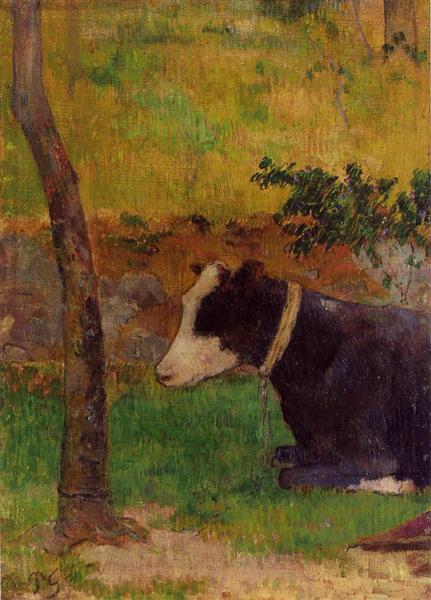Kneeling Cow by Paul Gauguin (Interpretation and Analysis)
 |
| Kneeling Cow Source: Wiki Art |
Kneeling Cow was painted during his first return to France after visiting the Caribbean island of Martinique. As the title suggests, the painting depicts a kneeling black and white cow on a background of yellow and green. Gauguin often explored landscapes and nature imagery in his art, using it as a tool to explore other themes and to play with color and composition. Gauguin was particularly interested in portraying the countryside of Brittany, and made many paintings and drawings in the pastoral style.
Although Kneeling Cow is by no means one of Gauguin’s major works, it is a snapshot of his artistic style and a fine example of his Breton work. Personally, I also find it to be a rather charming and sweet painting. Like all paintings of cows, Kneeling Cow conveys a sense of warmth and bucolic peace.
Disclaimer: I’m not an art historian or an expert on this topic. The above is my opinion, based on my interpretation of my foreknowledge of art and history. If I’ve done any additional research, I’ll note it above.



Comments
Post a Comment